¶ Straight Descents
The technique for straight descents varies according to the airspeed on entry and whether a constant airspeed or constant rate descent is made.

A descent may be performed at any normal airspeed the helicopter can attain, but the airspeed must be determined prior to entry.
The application of both constant speed and constant rate descents are quite similar. While the aim in constant rate of descent is maintaining the target descent rate, which is usually 500 fpm or 1000 fpm, it is maintaining the target airspeed in constant airspeed descent.
Even with high performance helicopters, descent rates of more than 1000 fpm are not common practice due to the high rate of pressure changes in a pressurized cabin and some aerodynamic concerns.
¶ Constant Airspeed Descent
¶ Instruments
For constant airspeed descent:
- Airspeed indicator and altimeter are primary instruments for pitch
- Heading indicator is primary instrument for bank
- Torque/manifold pressure is primary instrument for power
- Attitude indicator is supporting instrument for pitch and bank
- Vertical speed indicator is supporting instrument for pitch
- Turn-and-slip indicator is supporting instrument for bank control
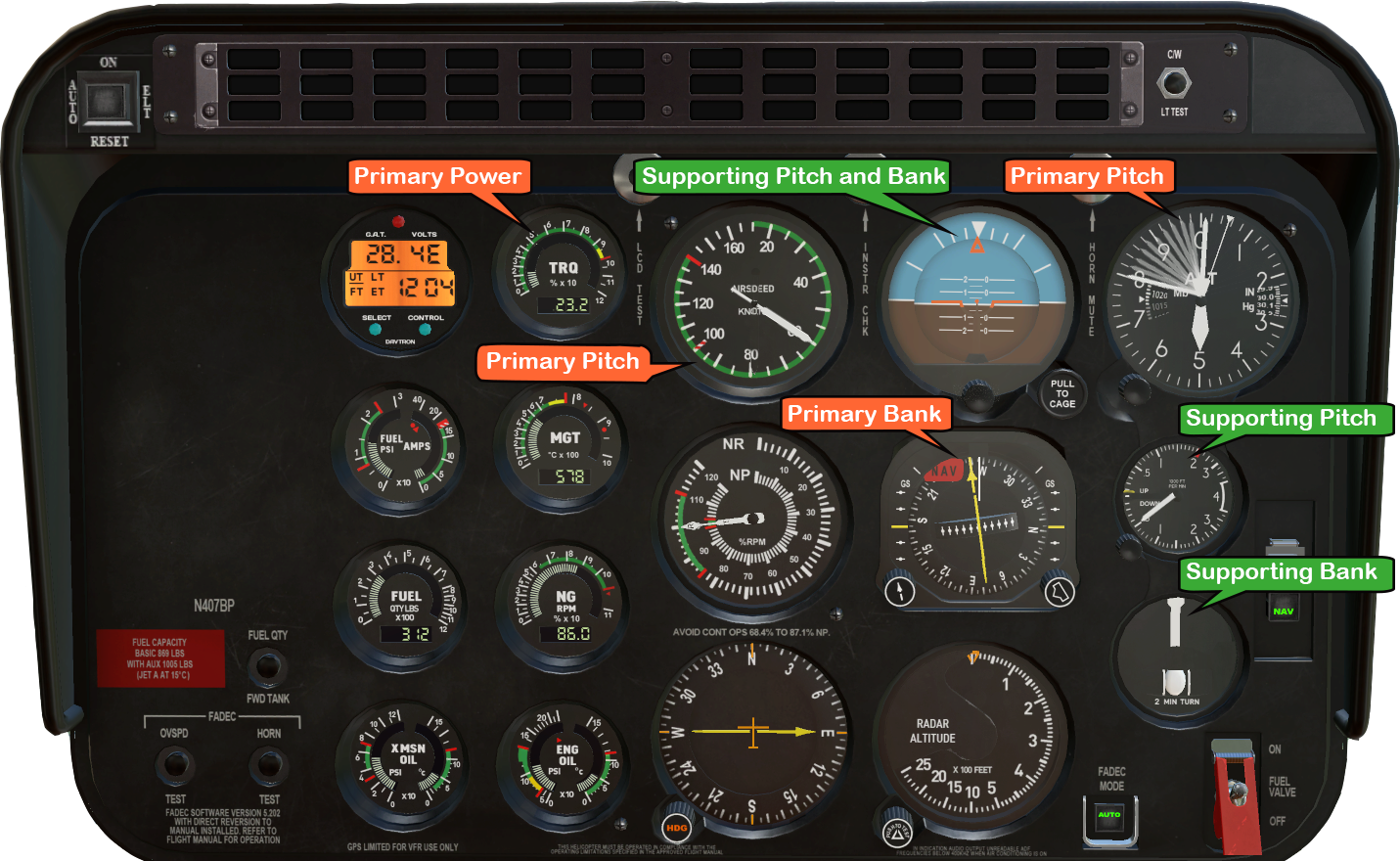
¶ Entry
- If airspeed is higher than descending airspeed, and a constant airspeed descent is desired, reduce power to a descent power setting and maintain a constant altitude using the cyclic pitch control. This slows the helicopter
- As the helicopter approaches the descending airspeed, the airspeed indicator becomes primary for pitch and the manifold pressure is primary for power
- Holding the airspeed constant causes the helicopter to descend
¶ Level-Off
For a level off at descending airspeed, the lead should be approximately 10 percent of the vertical speed.
- At the lead altitude, simultaneously increase power to the setting necessary to maintain descending airspeed in level flight.
To level off at an airspeed higher than descending airspeed, increase the power approximately 100 to 150 feet prior to reaching the desired altitude
- The power setting should be that which is necessary to maintain the desired airspeed in level flight
- Hold the vertical speed constant until approximately 50 feet above the desired altitude
¶ Constant Rate Descent
This type of descent is generally used for training purposes. It is also used when a specific amount of descent is required in a specific amount of time.
¶ Instruments
For constant rate descent:
- Airspeed indicator is primary instrument for power
- Heading indicator is primary instrument for bank
- Attitude indicator is supporting instrument for pitch and bank
- Vertical speed indicator is primary instrument for pitch
- Turn-and-slip indicator is supporting instrument for bank control
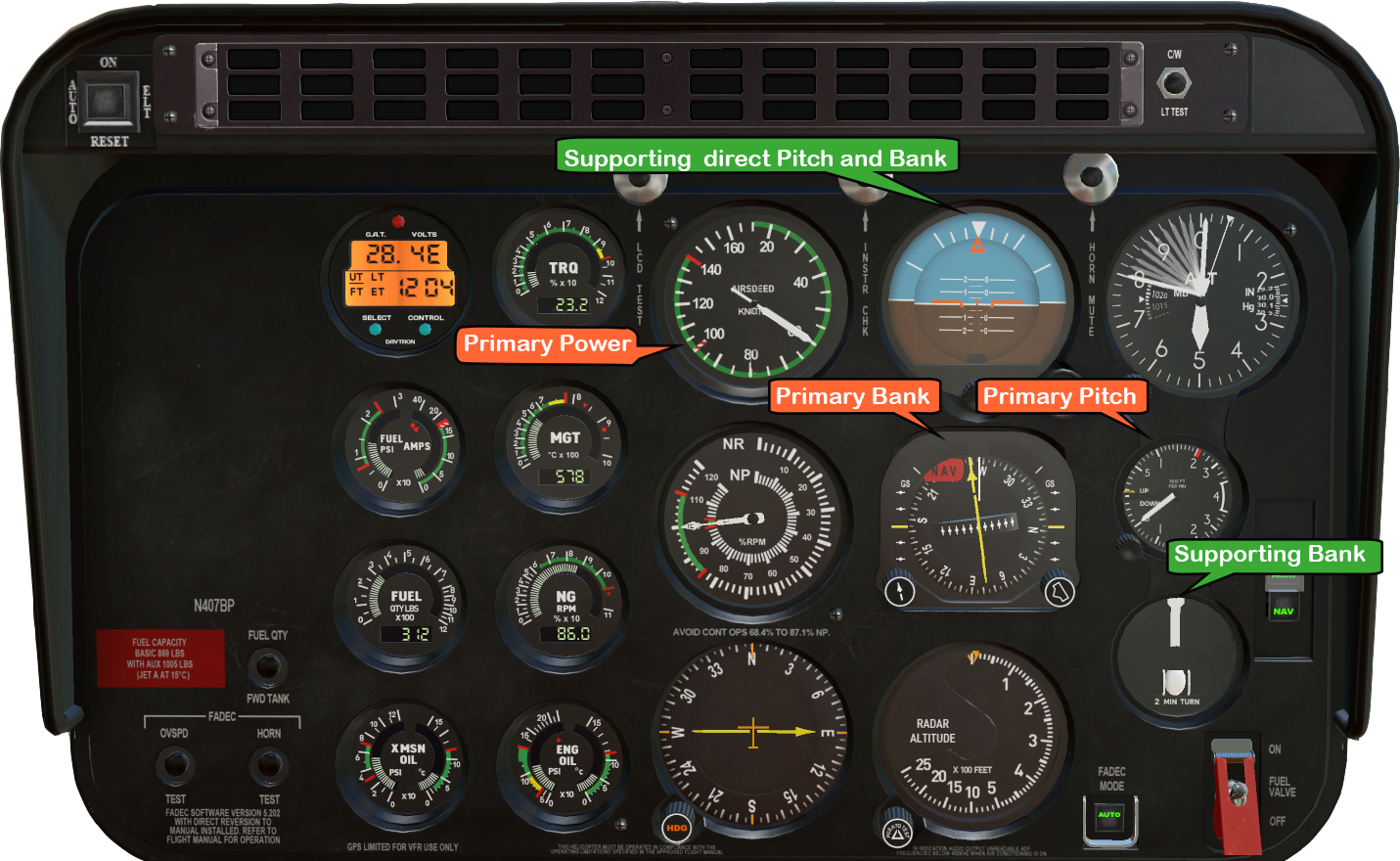
¶ Entry
- Reduce the power to the approximate setting for the desired rate
- If the descent is started at the descending airspeed, the airspeed indicator is primary for pitch until the VSI approaches the desired rate
- At this time, the VSI becomes primary for pitch, and the airspeed indicator becomes primary for power
- Coordinate power and pitch attitude control as previously described
¶ Level-Off
The level off from a constant rate descent should be accomplished in the same manner as the level off from a constant airspeed descent.
¶ Practical Example
¶ Conditions and objective
Helicopter is in straight-and-level flight at 2000'.
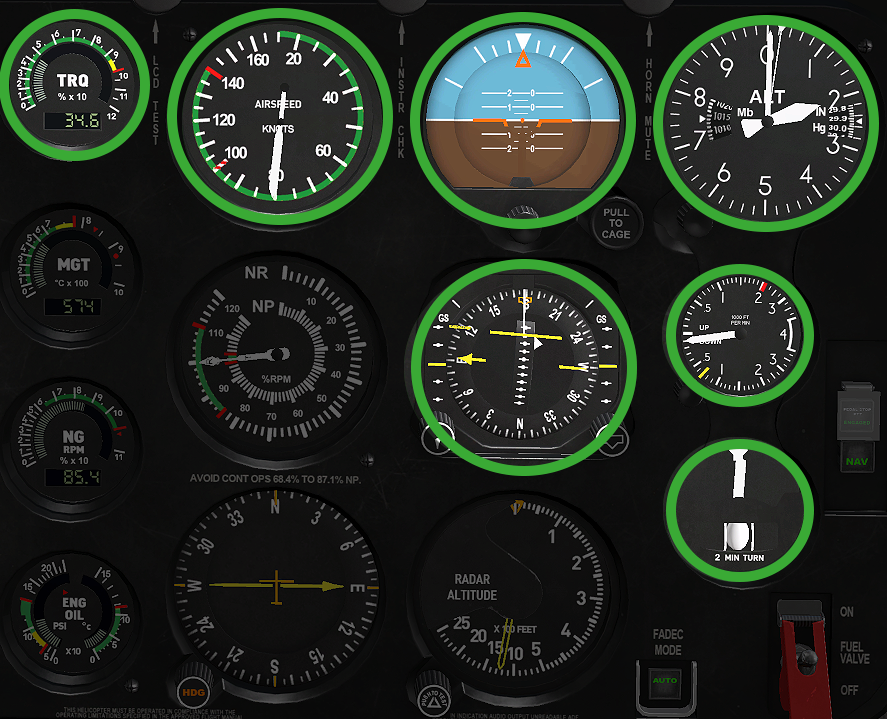
Objecive: Descend to 1500' at 60 knots with 500 fpm rate
¶ Entry
Simultaneously decrease power to the descent power setting and adjust pitch attitude to the approximate descent attitude.
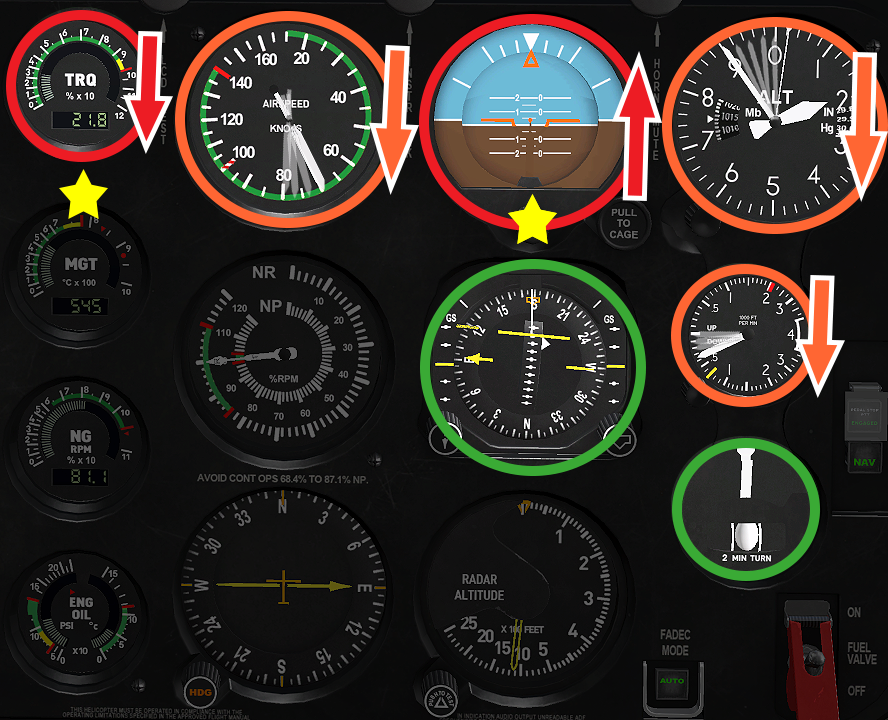
When the helicopter stabilizes at a target airspeed and vertical speed, continue cross-checking other pitch instruments and adjust the power and pitch as necessary.
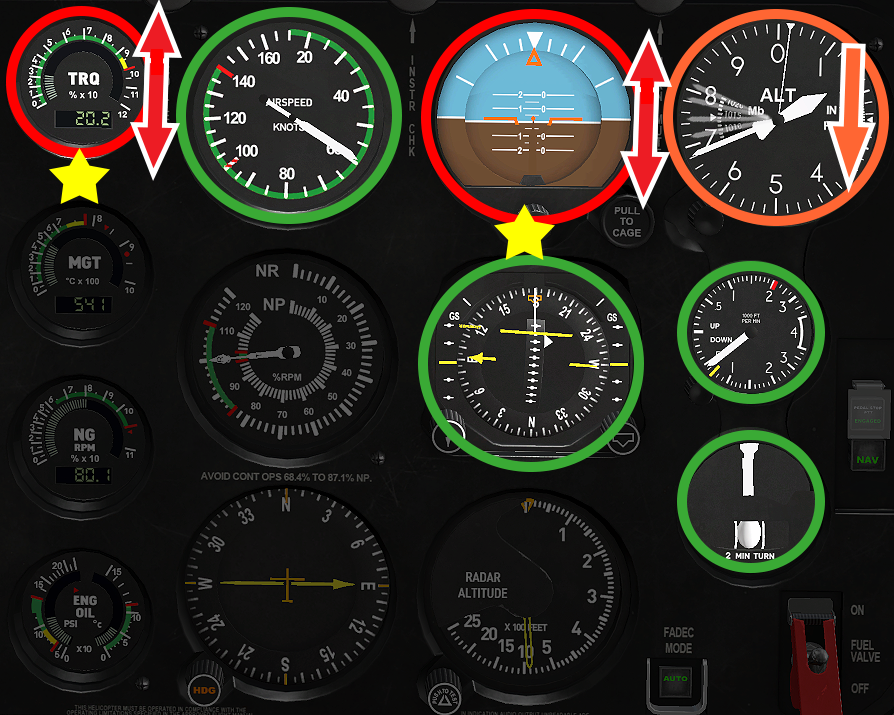
¶ Level-off
Initiate level-off at 1650' by applying level flight power and forward cycling as necessary. Hold the vertical speed constant until 1550'.
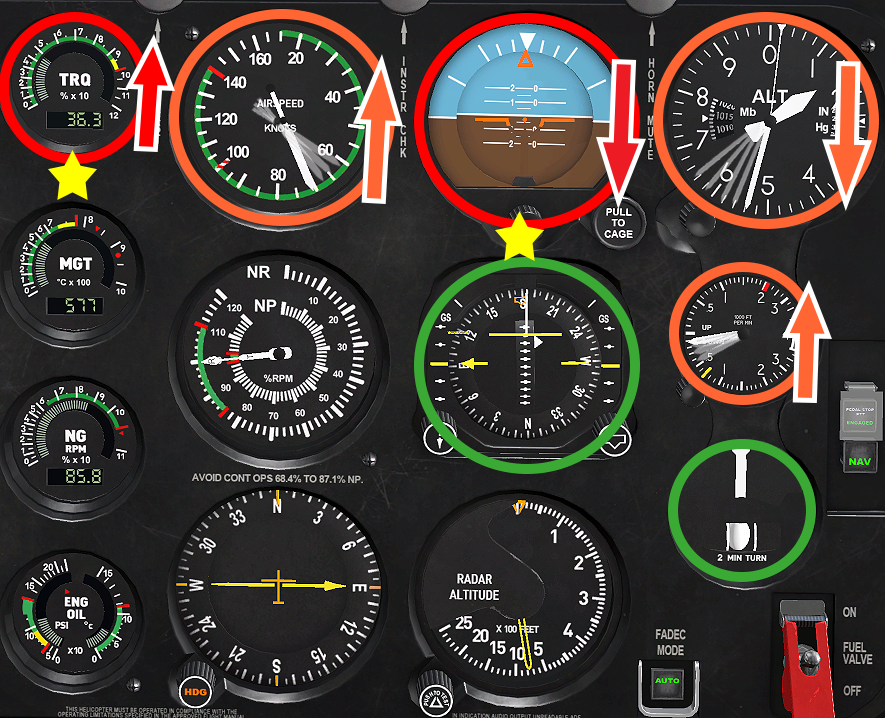
Establish straight-and-level flight by adjusting power and pitch as necessary.
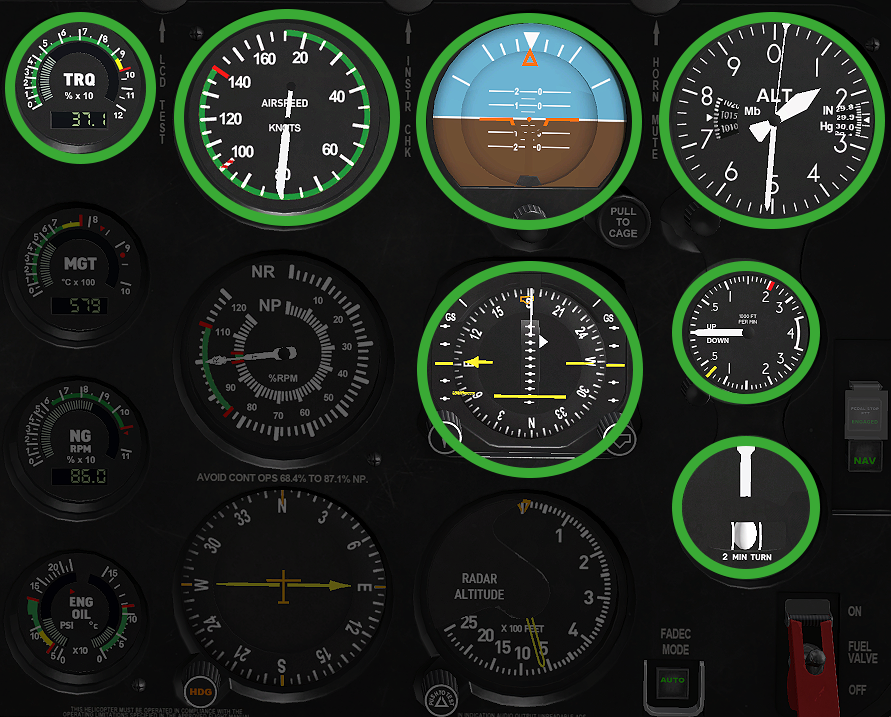
- Instrument Flying Handbook (FAA-H-8083-15B)
- VID 522050- Creation
- VID 496402 - Wiki.js integration